The biggest concern when wearing a wig is how to wear the wig as safely as possible, to avoid having the wig become slightly askew, or worse, having it fall off together. Even the most veteran of wig-wearers occasionally has a bad wig day. Often, this results from the wig not being secured properly.
Luckily, we have your back. This article is a definitive guide to how to secure a lace wig, we will walk you through how to use everything from bobby pins to wig glue, and will help you choose the right securing method for your hair type.
Say goodbye to bad hair days. Let's get started.
How to Secure a Wig without Glue - 4 Different Ways and Their Pros & Cons
When many people think of securing wigs, they often jump to wig glue, which is one of the most common methods. When applied correctly, glue can fasten the wig in a way that can hardly be seen and which can stay for several days at a time.
However, wig glue isn’t a perfect solution. Using the wrong glue can aggravate your scalp and cause a reaction that can lead to hair loss. Meanwhile, using too much glue can leave residue along your scalp, but not using enough can cause your wig to loosen during the day--and that, of course, is how accidents happen.
We will look at how to properly use wig glue later in this article. For now, however, we will examine the other alternatives, which can often work just as well and, in some cases, even better.
1. With Bobby Pins
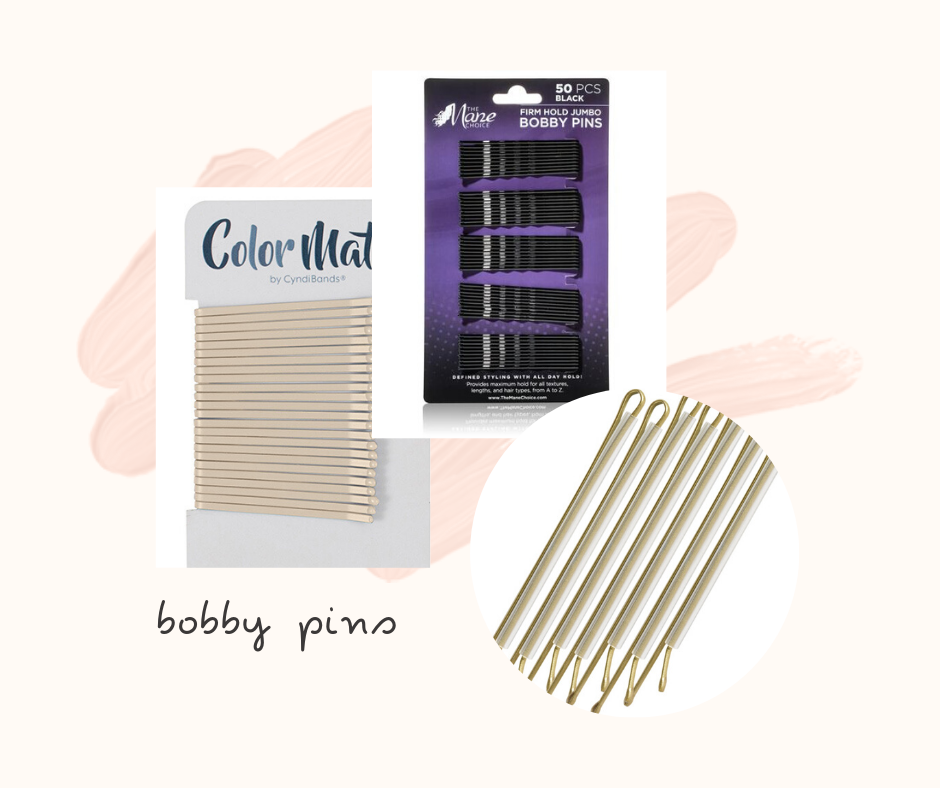
Bobby pins need no introduction. You’ve probably used them to tame flyaways at some point in your life. But did you know that you can also use them to secure your wig? Bobby pins provide a firm hold from the moment you put your wig on in the morning until the moment it comes off at night.
1. When deciding on which pins to purchase, bear in mind that not all bobby pins are the same. They come in a wide variety of shapes and sizes, differing in terms of thickness, flexibility, ridges, and color. When choosing proper bobby pins, make sure that the pin feels comfortable and flexible enough to wear for hours at a time; if yours give you a headache after a few hours, swap them out for a new set. And make sure that the color matches your wig wherever possible in order to reduce visibility.
2. Once you’ve purchased the correct bobby pins, tie or braid down of your natural hair. Smooth any stray or baby hairs with gel, hairspray or pomade. Your hair should lie as flat as possible.
3. Secure your wig slowly, working from the front to the back. Make sure that it’s in the position you want. Check, double-check and triple-check in the mirror.
4. Now it’s time to break out the bobby pins. Work slowly by lifting your wig slightly section by section. It is recommended to begin at the front: Gently lift up a section of the wig along your edges, then slide the bobby pin through both the weft and your own hair.
5. Work all the way around your head. Check how secure the wig feels. If it feels even a little bit unstable, add more bobby pin. As long as they’re not visible (and if you’ve chosen a matching color, then they shouldn’t be visible!) add as many as it takes for it to feel completely secure.
6. Shake your head slightly to make sure that the wig holds. You’re ready to go!
So what are the pros and cons of using bobby pins?
Pros:
1. Bobby pins are cheap and easy to come by. If you have access to a beauty supply store--or even a convenience store--you can often pick up a pack of several dozen for little more than a dollar. The low price and high availability make it easy to try out different types, purchase different colors and restock on the go.
2. Bobby pins don’t use any sort of chemicals, unlike glue, so they won’t leave you with an aggravated scalp. That is, unless you secure them too tightly.
3. Bobby pins are easy to manage, so if you want to adjust your wig--or even change it completely during the day--you’ll be able to do that without wrestling with glue.
Cons:
1. You will need a good amount of natural hair in order to use bobby pins, as the pins must have something to secure to. If you’re wearing a wig as a way to compensate for hair loss, then bobby pins may not be the method for you.
2. If you secure the pins too tightly, they can cause a headache.
3. It can sometimes require plenty of pins to secure a wig properly. If you use too few, the wig may subtly go askew without you realizing it. If you use too many, you may irritate your scalp or even pull out your natural hair.
4. Using many pins can make putting on or taking off a wig a bit time-consuming.
5. Bobby pins are not commonly used when to apply a lace front wig or a full lace wig, because they will break the lace with holes.
2. With Clips
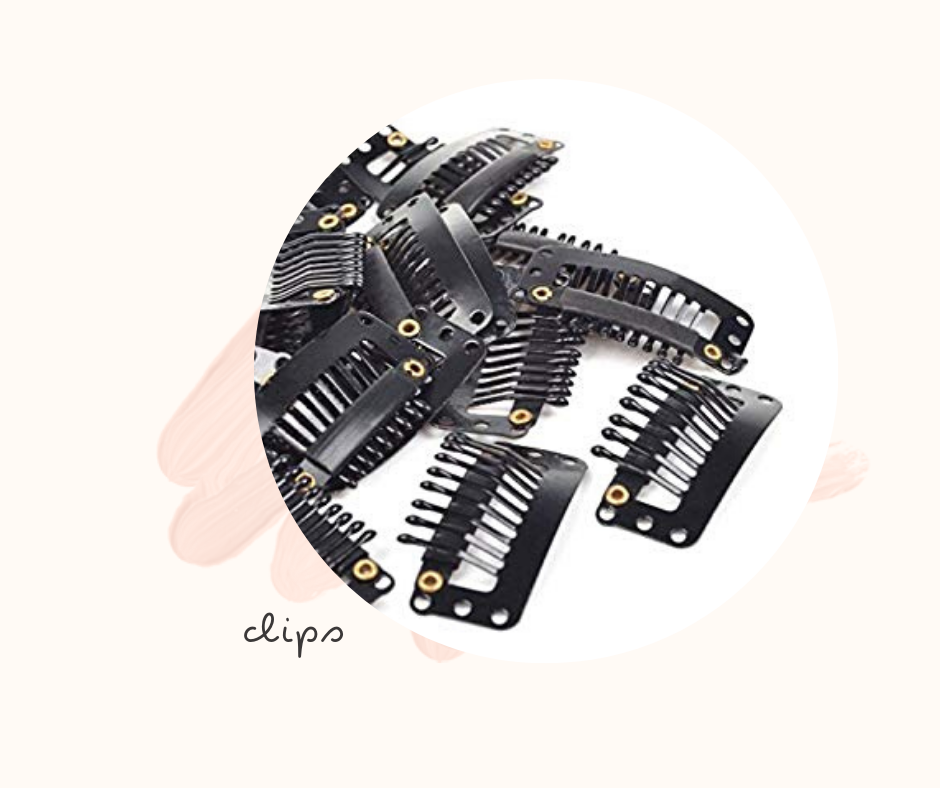
Wig clips are a bit more secure (and a bit more advanced) than bobby pins. On the bright side, once installed, they become a stable long-term solution that can make putting on and taking off your wig a breeze. On the downside, they require a bit of sewing skill to install.
What are wig clips? They are plastic or metal combs that can be sewn into your wig. They are secure and long-lasting. Unlike bobby pins, which need to be added and removed at the beginning and end of each day, wig clips are permanent--once you sew them in, you can use the same clips for the entire lifespan of that wig.
1. Purchase a set of clips. They are usually sold in packs of a dozen or so from local beauty supply stores, as they are a fairly common item. Use as many or as few as you need in order to feel secure.
2. Sew in the wig clips by hand. Space each clip out about 1 inch (roughly 2 centimeters) apart and work your way all the way around. Test to make sure the clips are secure, because you don’t want your wig sliding off! You should also check to ensure that the thread is not visible. To be safe, use a thread that matches the color of your wig.
You should sew at least 6 clips, two along the hairline, one on the top, two on each side around the ears, one on the back around the neck. And then add more to the places you want.
3. Now it’s time to prepare your own hair. Tie or braid your hair down. Use gel, hairspray or pomade to lay your baby hairs flat and to smooth down any stray strands.
4. Slowly slide the wig onto your head, beginning at the front. Carefully work the clips into your natural hair one by one. Take your time. You don’t want to put the clips in too tightly, which can cause a headache, and you don’t want to move too quickly and accidentally snap off part of a clip. Depending on the material they’re made out of, the teeth on wig clips can break easily.
5. Check your wig to make sure that it’s straight, and test whether it’s secure by lightly shaking your head or by wearing it around your house for about five minutes. If you feel anything slipping, secure the wig clips more tightly, add a few bobby pins or consider sewing in more clips.
Pros:
1. Because they slide directly into your natural hair, wig clips offer a secure hold without any of the risks that come with using a heavy glue.
2. Wig clips are fairly easy to install and last a long time. This makes them a good long-term option for people who don’t have time to wrestle with dozens of bobby pins each morning.
3. Wig clips are invisible. If you install them correctly and use a thread that matches your hair, you’ll never have to worry about anything accidentally showing.
Cons:
1. Like with bobby pins, wig clips require a fair amount of natural hair to get a stronghold, preferably at least an inch or two. For people who have hair loss, this might not be a valid long-term option.
2. Similarly, for those with a sensitive scalp or hair that is prone to breakage, wig clips may cause headaches or put undue strain on the natural hair.
3. Installing wig clips requires knowledge of sewing--only basic knowledge, to be sure, but knowledge nonetheless. Anyone who is not a veteran sewer may leave threads visible or accidentally damage the wig. If you don’t already know your way around a thimble, learn from a friend, watch a few YouTube videos and practice on a piece of fabric before you take a needle to your wig.
4. Wig clips still aren’t quite as secure as glue, so if you’re doing heavy amounts of physical exercise, you’ll have to take extra care that your wig remains in place during cardio. Consider adding a few bobby pins for good measure. Better safe than sorry.
3. With Elastic Band
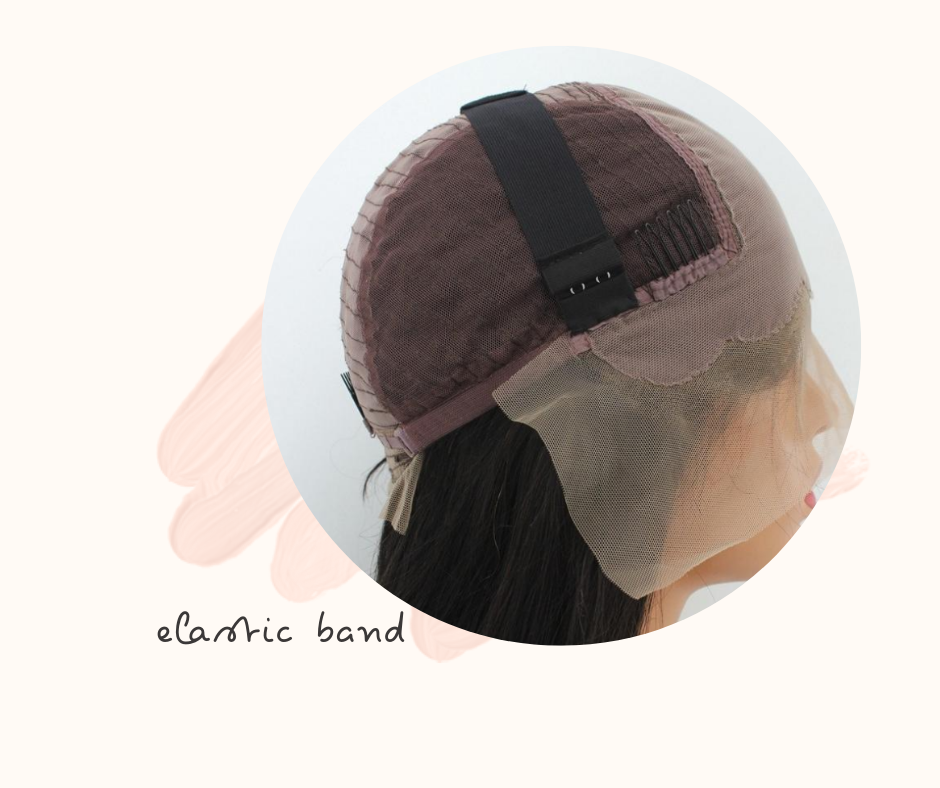
This one will require a little more sewing, but once you’ve sewn it in, it requires even less work than the bobby pin or wig clip method. An elastic band is a strip that can be attached in a wig from ear to ear in order to provide a quick and snappy way to secure it. This is especially useful for those in a hurry.
1. Fortunately, this method doesn’t require a particular type of elastic that is compatible with hair. Any type of elastic will do as long as you find it comfortable and it doesn’t pull too tightly at your scalp. Patronize your nearest craft store to pick up a roll at a relatively low price.
2. Sew the elastic band on the inside of your wig, running it over your head from ear to ear. Be careful to make sure that no parts of the elastic show through. You don’t have to go as far as dying the elastic the same color as your wig; however, if you can find elastic that matches your wig color, this will make the application process all the easier as it will help the wig look natural.
3. Apply the wig to your head slowly, working from front to back. If it’s too loose, tighten the elastic. Check in the mirror to make sure that all is in order.
Pros:
1. Elastic is easy to manipulate as a material. Unlike wig clips, which must be painstakingly sewn, elastic is a little simpler for beginners, as it is thicker and can be sewn as a single continuous piece.
2. This method is perfect for anyone on the go, as you can snap on your wig as you head out the door. There’s no need to mess with dozens of bobby pins, and you don’t even have to worry about wrestling with wig clips. Just slide it in, adjust in the mirror and go.
Here's an article of how to sew the elastic band by yourself: https://www.evawigs.com/blog/4-different-ways-of-sewing-the-elastic-band-to-secure-your-wig-and-lay-the-hairline-flat.html
3. Unlike bobby pins and wig clips, an elastic band doesn’t require a lot of natural hair to stay in place. That makes this perfect for anyone with hair loss or sensitive hair.
Cons:
1. Like wig clips, this method does require a little bit of sewing. Mistakes therein can make your wig lie unevenly or prevent the elastic from properly securing the wig.
2. The elastic can pull against your scalp. When applied improperly, the band can rub against your natural hair and cause breakage.
3. If you don’t secure the elastic tightly enough, this method will not be as secure as bobby pins or wig, so if you plan on doing a lot of strenuous exercise or even just leaving your wig on for an extended period of time, you may have to manage slippage.
4. With Wig Grip
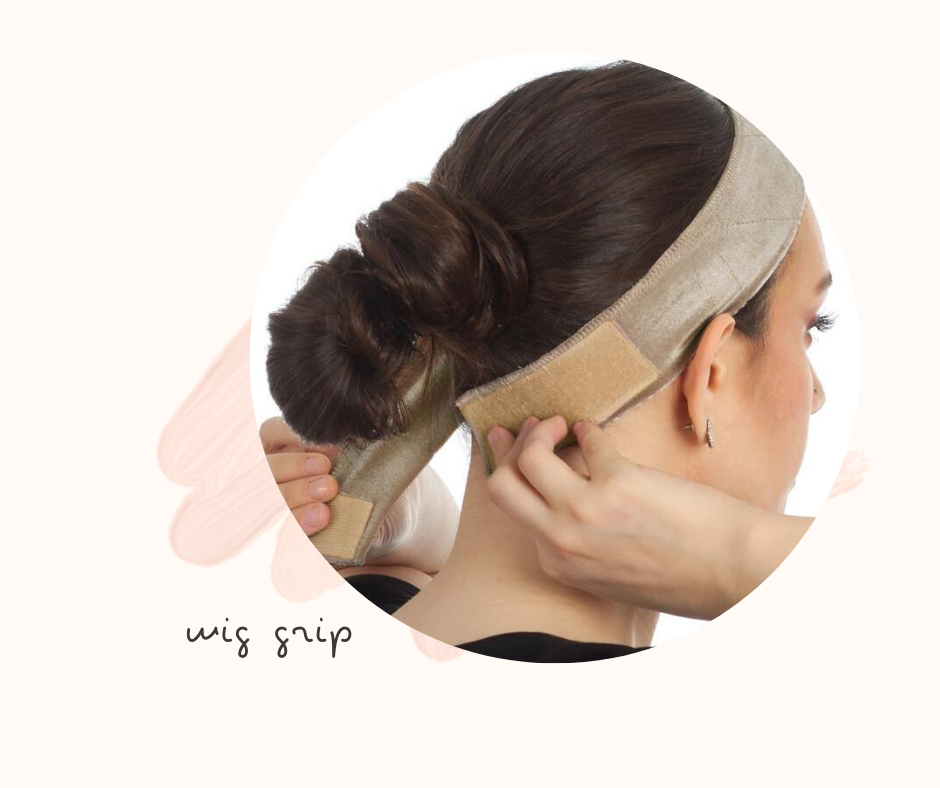
One of the most common methods is the wig grip, and for good reason. They are easy to secure and easy to wear, and no natural hair is required in order to make them look great.
They are more of an advanced option than plain elastic, because wig grips are often comprised of two components. Velvet on both sides leaves you with a firm hold that won’t irritate your scalp or pull your hair, while the gripping material adheres to your scalp on one side and the wig on the other.
1. Smooth down your natural hair if you have any and secure it with glue or hairspray, paying special attention, as always, to baby hairs and flyaways.
2. Carefully line the wig grip up with your hairline and adjust the fit with the strap that can be found in the back. Secure the wig from front to back slowly. The nape of the wig should be the last piece secured.
3. Ensure that your wig is straight and secure by checking it in the mirror, shaking your head gently or wearing it around for a few minutes. If there is any slippage, pull the grip tighter.
Pros:
1. The grips make your wig easy to put on and easy to take off. So easy, in fact, that you can easily remove your wig during the day, whether you just want to cool down during the summer months or even change your hairstyle during your lunch break.
2. They are gentle on sensitive scalps and skin, so they won’t tug at your natural hair. If you have hair loss or if you’re even just trying to grow your hair out, this is an excellent and protective choice.
3. The lack of tight clips reduces the risk of headache or discomfort.
Cons:
Unlike wig clips, wig grips don’t last forever, as they can stretch over time and therefore provide an increasingly less secure hold. How often you have to change your grip is dependent upon how tightly you pull it and how often you wear that particular wig, so be aware.
How to Secure a Wig with Glue
The first method, and perhaps the most secure, is wig glue. You can apply an adhesive just to your edges if you’re wearing a lace front over natural hair, but if you’re completely bald, you can make use of roll-on glue to secure the wig with a firm and natural-looking hold. Whichever method you choose, be aware that incorrectly removing the glue could lead to pulling out hair. So if your scalp is sensitive, beware.
1. First, you need to cleanse your hairline. Dampen a soft rag or cotton swab and run it gently along your hairline to strip away buildup of dirt and oils that could prevent the glue from properly sticking.
2. Gently apply the glue along your hairline. Follow the instructions on the packaging, as each glue is a bit different, and some need to dry slightly before you can adhere the wig to your scalp.
3. Attach your wig slowly and carefully, working from front to back, similar to the other adhering methods.
4. Be sure that your wig is on straight before you press it firmly down, or else the glue will bond while the wig is still askew! The last thing you want is for your wig to be secure--but crooked.
5. Gently press the hair down onto the glue. Let it sit for 10-15 minutes before you style it in order to make sure that the adhesive is completely dry.
Pros:
1. Wig glue is relatively inexpensive.
2. No sewing is required. Even if you lack skills with a needle and thread, you’ll be able to stick-and-press with ease.
3. Compared to bobby pins, wig glue is incredibly secure and less time-consuming.
Cons:
1. As with any chemical, there’s a risk of an allergic reaction. Test the glue by dabbing a little onto the back of your hand and leaving it for several minutes (or preferably overnight). If you develop a reaction to it, then don’t use that glue on your scalp! Not unless you want to severely damage your hair. Even if you’ve never had an allergic reaction to a hair chemical before, it’s better safe than sorry, so be sure to test everything before you apply it.
2. Unlike clips and bobby pins, wig glue cannot be reused, so you will have to continually buy more.
3. It’s not recommended that you remove your wig and reapply it several times over the course of the day, as that could pull up your hair or irritate your scalp. So if you’re prone to overheating in your wig, you may want to choose a method that will allow you more flexibility for daytime removal.
4. If you don’t completely wash off the glue at the end of each day, either with water or a gentle solution, glue can build up and irritate your skin.
That said, let’s look at the two most popular brands of glue.
1. Got2B Glued
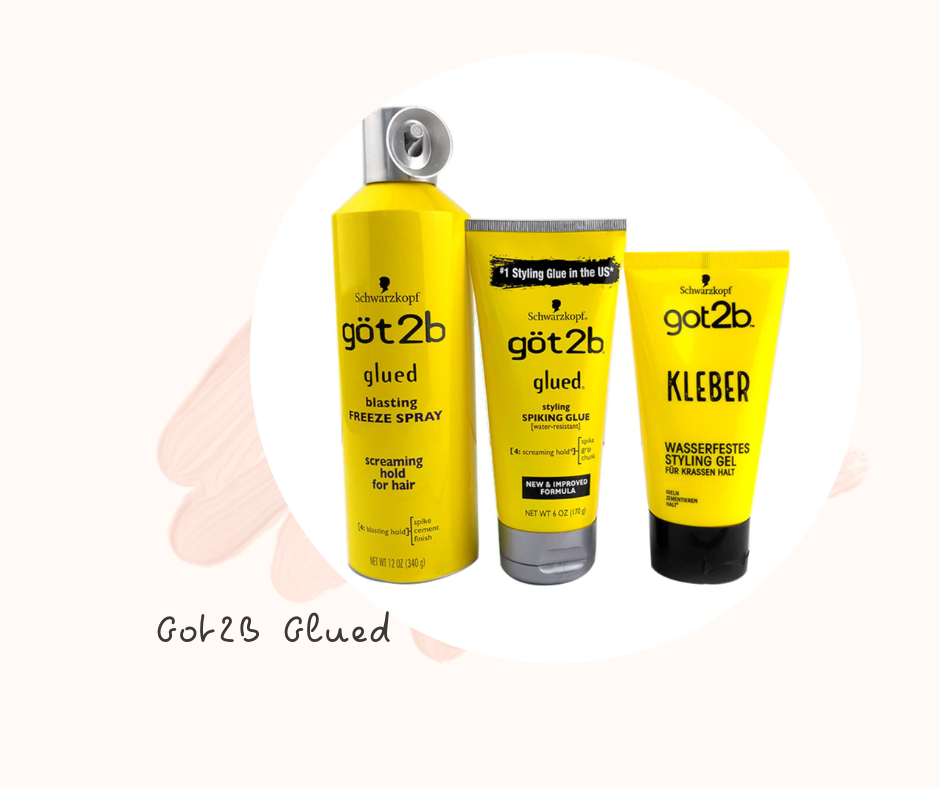
For short-term wear, Got2B glued is a simple choice. It’s a great beginner’s glue as it’s easy to stick and go. However, the original brand doesn't hold up well against sweat or water, so if you’re going out in the rain or plan to hit the gym, choose a stronger make.
2. Bold Hold Glue
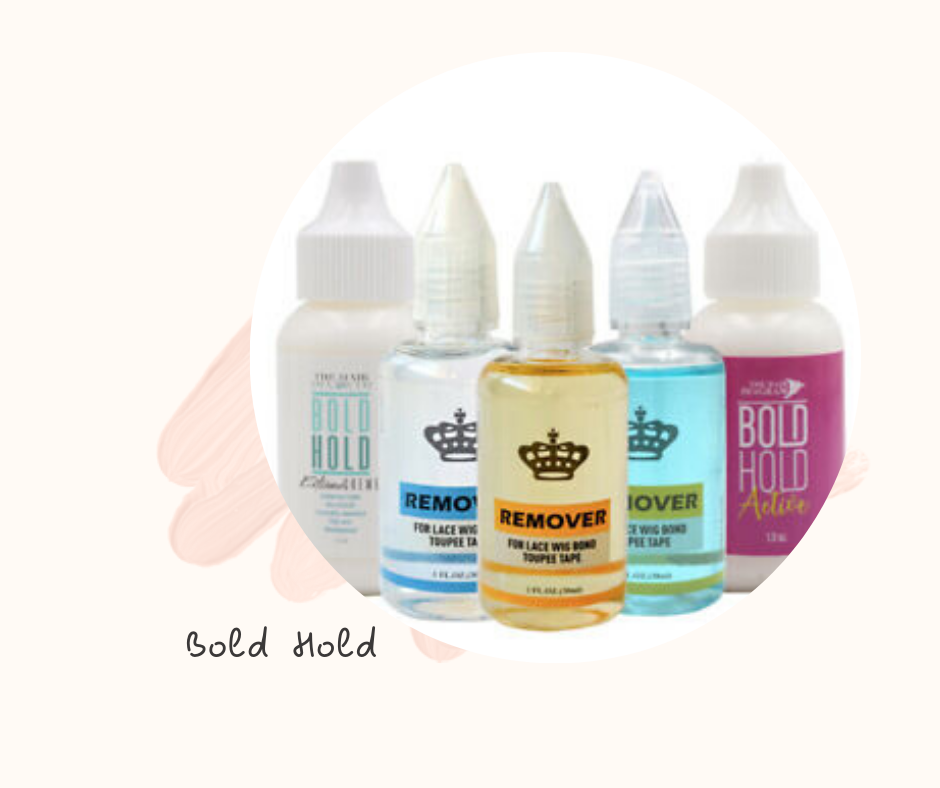
Bold Hold Glue comes in a wide range, from the original, which is perfect for everyday wear, to Bold Hold Extreme Cream and Bold Hold Active, both of which provide strongholds that can withstand not only precipitation and perspiration, but also overnight wear. That’s right--with Bold Hold, you can rock your wig for days at a time. Perfect for a busy schedule!
How to Secure a Wig with Tape
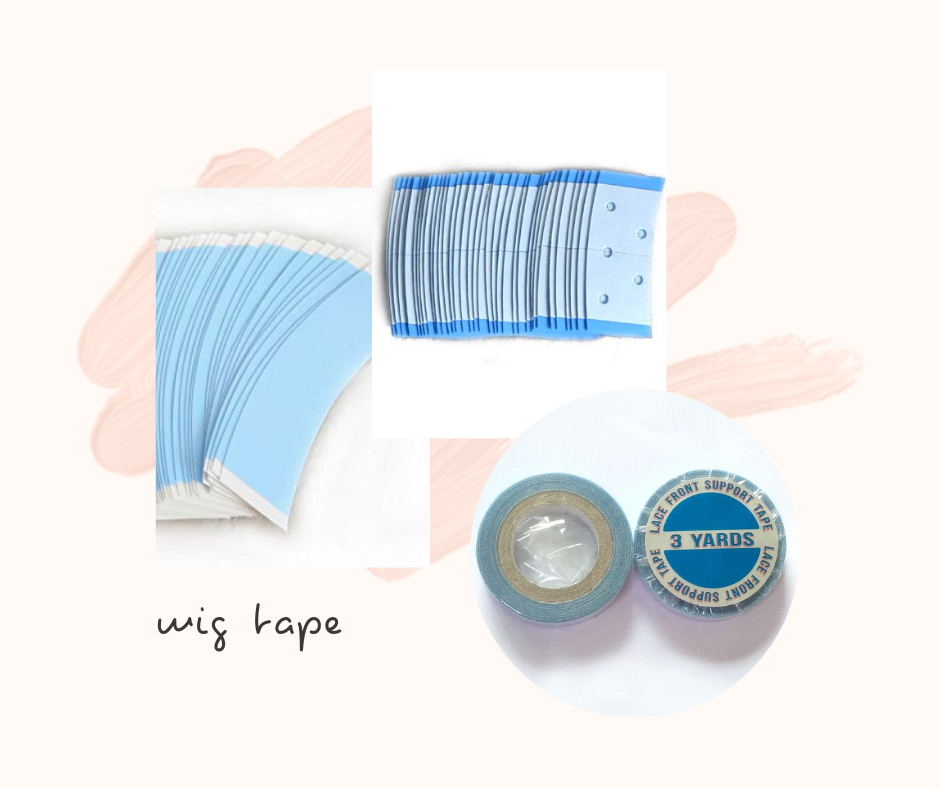
If you have natural hair, tape is not the best choice, as it can easily pull up your roots and leave your skin irritated (and your hair damaged).
Wig tape is as simple as it sounds. It’s a double-sided adhesive that secures your wig to your scalp along your hairline. Although at first glance tape doesn’t seem particularly secure (especially compared to something like glue) this is actually an extremely stable measure that can hold your wig for an entire day.
1. Cut the tape into strips according to your preferences. You have a lot of freedom here, so press the tape along your hairline in any way that feels secure. If you’re bald, you can adhere the tape all over your head for an extra strong hold.
2. Be aware that some wigs come readymade with places to put the tape. This will make the process easier.
3 But on the wig slowly, beginning from front to back.
4. Check the wig in the mirror.
5. Press the wig down firmly and hold it for several seconds to make sure that the glue adheres. Now you’re ready to go!
Pros:
1. The tape is often as strong as wig glue, with less of a cleanup required afterward.
2. Wig tape is not the cheapest item on the market, but a single roll lasts a long time, so it’s worth the money.
3. There’s a lower risk of a chemical reaction than with the glue.
Cons:
1. As with the glue, it’s difficult to remove the wig throughout the day.
2. Although you’re not using pure chemicals like with glue, wig tape can leave behind residue, so be sure to thoroughly clean your hair, scalp or any other part that comes into contact with the tape throughout the day.
3. If your tape is especially secure, you may need a solution in order to help it come unstuck.
Tape vs. Glue
Wig tape or wig glue. Which is better?
Which is easier to use?
Tape. Tape requires no mess and is easy to apply. If you do mess up during the application process, it’s easy to remove the tape and readjust your wig--easier than it is to wash off glue and start over.
Which is better for a natural look?
Glue. While tape can look extremely natural, beginners risk leaving part of the tape visible. On the other hand, glue dries clear, so you can be sure that you’ll have a more natural look.
Which gives a stronger hold?
They can both give an equally strong hold, especially because both glue and tape come in a wide range of strengths, from a lighter grip that is good for sensitive scalps, to a tight grip that is perfect for people who hit the gym.
Which is easy to remove during the day?
Neither. If you want to remove your wig during the day, either to cool down or to quickly swap it out for another look, you will be much better served by wig clips or bobby pins. Tape and glue will both take a great deal of effort, and removing and reapplying them too often can irritate your edges.
Where can they be found?
Nearly any beauty supply store will have wig tape or glue in stock, which is convenient. Unlike wig clips, these items cannot be reused, so keep backups in your cabinet to prevent being blindsided by an empty bottle or exhausted roll.
How to Choose the Most Suitable Way According to Your Natural Hair
1. When Bald
If you’re bald, a wide range of options is available to you when it comes to getting a firm hold. Although bobby pins and wig clips require a certain amount of hair, being bald puts you at an advantage when applying tape or glue. You will be able to apply wig glue all over your entire scalp to achieve an enviably firm hold that is not available to people with hair.
When using glue, it’s crucial to properly prepare your head. It’s not as simple as rubbing glue on your scalp and pressing the wig down. Follow these steps to protect your skin!
First, wash your scalp completely using soap and warm water to remove dirt and oil. Natural oils can prevent the glue from sticking fully, and they can also, if left to fester under your wig, result in a build-up that will harm the health of your scalp.
After cleaning, spray a scalp protector to create an extra barrier between your skin and the wig. This can further prevent dirt from building up. After the protector dries, apply liquid adhesive sparingly with a small applicator brush and blow dry it for 30 seconds.
Apply the wig from front to back. Adjust it in the mirror before pressing it down firmly.
2. When Have Short Hair
If you have short hair, you have the most options when it comes to securing your wig. You can either braid your hair down or, if it’s short enough, simply apply the wig directly after brushing stray strands back from your face.
Having a little bit of hair will also make it easy to use bobby pins or wig clips. Short hair can also easily be tucked underneath a wig cap.
Bobby pins, wig clips, an elastic band or a wig grip would work best. However, you can also use tape or glue around your edges for a strong hold.
3. When Have Long Thick Hair
Wearing a wig if you have long, thick hair may be a bit more difficult, but it’s definitely doable. You, too, can achieve a chic look!
The most important factor is to keep your natural hair flat underneath the cap. If your hair prevents your wig from lying flat against your scalp, you cannot achieve a natural look. Nothing gives away the fact that you’re wearing a wig faster than if your wig isn’t secured correctly!
To make your hair lie flat, thoroughly comb it out and then braid it, preferably in multiple braids sectioned evenly and dispersed around your head. If that is not possible, you can also wrap two French braids evenly around your head.
If you braid your hair while it’s wet, give it time to dry before securing a wig cap.
Finally, apply bobby pins or wig clips. Since you have so much natural hair, these methods will ensure that the wig is firmly secured. Add as many pins or clips as necessary depending on the thickness of your hair--the more hair you have, the more pins you need in order to create a secure hold. Even if you use wig clips, carry some bobby pins around to ensure an extra-strong hold. You can use wig glue around the edges to finalize the hold.
4. When Wear Wigs as a Protective Way
If you’re wearing a wig to protect your natural hair, then the most important element is the wig cap. A wig cap is an absolute must for anyone trying to prevent breakage.
An elastic band or a wig grip will function better than bobby pins or hair clips, which can pull at your natural hair. Glue and tape can also accidentally tug at your roots if applied incorrectly, so to completely avoid these possibilities, stick with elastic.
If you choose to use bobby pins, braid your hair first to prevent tangling and encourage growth.
Apart from that, you can--and should--take a range of steps in order to protect your natural hair, no matter the length.
1. Massage your scalp regularly, especially if your wigs often feel a little tight. This stimulates blood flow and promotes growth.
2. Shampoo often. Your hair can become especially sweaty underneath a wig, so it will need regular cleansing. A deep conditioner is always an excellent bonus.
3. Ensure that your hair is dry before you apply a cap, or else you risk the growth of mildew. Also be aware during the day of how much sweat and moisture form underneath the wig which, when left unchecked, can result in equally unsavory build-ups.
4. Take your wig off at night. This will aerate your scalp and allow it to dry from any moisture that it has absorbed during the day. Furthermore, if you wear a wig to bed, you also risk it rubbing too harshly against your scalp or edges while you sleep, resulting in skin aggravation and hair loss.
5. Moisturize, moisturizing, moisturize! Dry hair often breaks. So saturate your hair with a water-based moisturizer every night before bed.
6. Let a professional trim your ends whenever they become dry or damaged to promote the growth of thick, healthy hair. It might seem counterintuitive to cut your hair in order for it to grow, but eliminating the damage does wonder for its health.
Three Key Points of Correctly Put on a Wig with Comfort and a Natural Looking Hairline
First, let's look at the most popular element of wearing a wig--the wig cap. This is also called a stocking cap.
1. Secure the Wig Cap - How to Keep the Wig Cap from Slipping
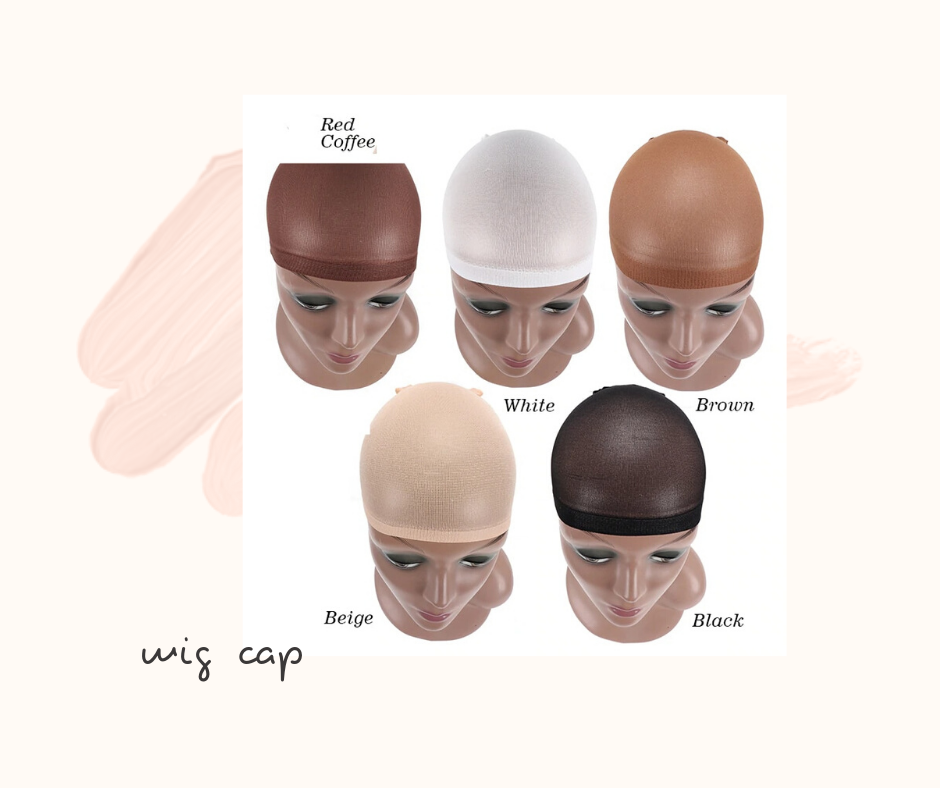
Securing a wig cap is very similar to securing a wig. Bobby pins will be your best friend throughout the process.
When putting it on, make sure that it’s not too loose, meaning that it should grip fairly tightly to your scalp without too much effort. If it doesn’t properly grip, you’ve either purchased the wrong size or you have worn it out to the point of stretching.
Braid your hair down as flat as possible. This will allow your wig to maintain a more secure hold on your scalp. Use hair gel or a small amount of water to make this process as easy as possible. Note: When properly moisturized, your hair should be moist or damp, but not sopping wet.
If you’re having trouble laying the braids flat, you can pin them down with barrettes.
Choose a wig cap that matches your skin tone in order to create the most natural look. In theory, your wig cap should never be seen, but in the event that your wig does become slightly askew during the day, a more natural color will help hide that fact.
Before applying the wig, use a scalp protector to guard sensitive skin against irritation that could result from rubbing against the wig or wig cap during the day. Give the protector time to dry before applying the cap.
When putting on the cap, take care to align it with your natural hairline, then apply it from the front moving toward the back, the same way you would apply a wig. It should sit exactly at your hairline.
2. Glue Down the Hairline
Use a small amount of wig glue along your hairline in order to create a flat hold. You can apply this much the same way that you would apply glue to a wig, being sure to first cleanse your hairline to remove dirt build-up.
Test the glue first to make sure that you don’t have an adverse reaction. Press the wig cap down slowly, beginning at the front head of your hairline and then moving back to the ears, to create a firm hold. Allow the glue time to dry.
3. How to Secure the Wig in the Back
Tug the wig cap completely over your head until it reaches the nape of your neck. For the most secure hold, it should grip your head at the exact point where the top of your neck meets the base of your head.
Use bobby pins here to secure the cap. You can never have too many! (Just be careful not to pull too tightly at your natural hair.) Bobby pins are your friend, especially in the back of the cap where it may be difficult to achieve a strong hold with glue. You should use at least two pins to ensure a secure grip. The thicker your hair, the more pins you will need.
When you want to wear your wig in a high ponytail, choose a 360 lace wig or a full lace wig, and it's better to glue down the back with someone else's help. You can read here for how: https://www.evawigs.com/blog/how-can-i-wear-my-lace-wig-in-a-high-ponytail.html
The Most Popular Way to Secure a Wig - The Stocking Cap Method
The stocking cap method (also called bald scalp method) is currently the most popular way to secure a lace wig, and results in a very natural looking hairline.
We have written an article about the method, you can read it here:: https://www.evawigs.com/blog/how-to-apply-your-lace-wig-with-stocking-cap-method.html
The first step of this method is to secure the wig cap, and it's best to blend the wig cap to the scalp using glue and skin color matched foundation.
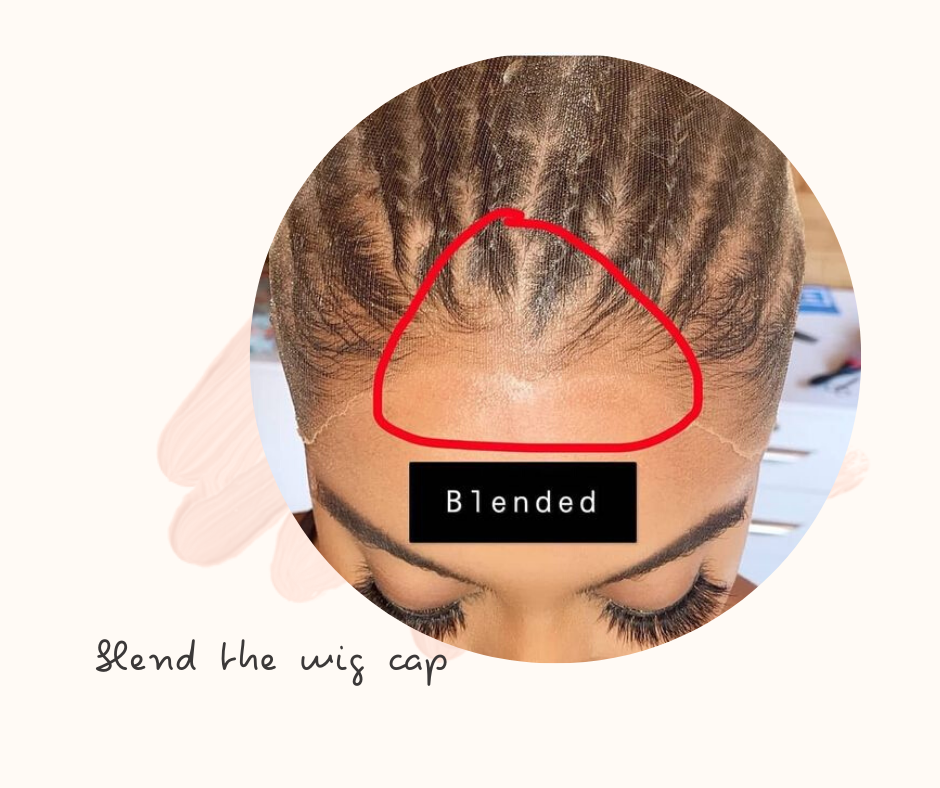
Here's a very detailed stocking cap method wig application video. In it, you can learn how to blend the wig cap and glue down the hairline. The video was originally filmed by @Beautii Linx.
How to Put on a Wig without a Wig Cap?
Fake scalp lace wigs will be your best choice if you're more willing to wear a wig without a wig cap. The pre-made fake scalp is designed to take the place of the wig cap, hiding the natural hair in the front parting area.

Time to Debut Your New Look!
There you have it! Now you know the best ways to secure a wig. Try a classic beginner style with bobby pins or wig clips, or create a seamless hold with elastic bands or a wig grip.
If you’re always on the go, then wig tape or wig glue will provide the strongest hold. If you work out or hope to wear your wigs for multiple days at a time, then this is the method for you.
Whatever the method you choose, remember to protect your skin, either by using a scalp protecting spray if you’re bald, or by using a wig cap and plenty of moisturizer on your natural hair. The health of your hair and skin is key.
What are you waiting for? It’s time to turn heads.








Hi James, thanks so much for appreciating this article on Evawigs.com.
2020-08-24 02:52:24You can place your order online at www.evawigs.com : )
2020-06-01 03:35:23Thank you, you can get a simple wig stand instead of a mannequin here: https://www.evawigs.com/accessories/1190-foldable-wig-stand.html And, you can find many kinds of cloth head at Amazon.
2020-02-18 04:41:35